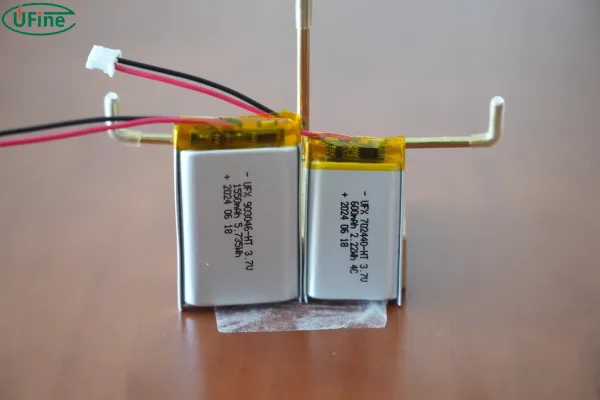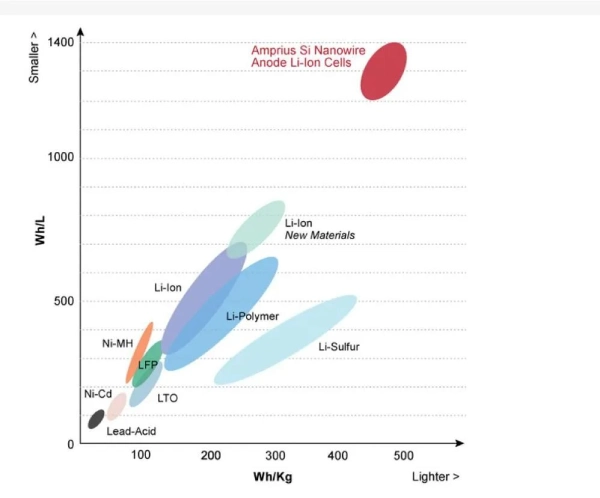
Part 1. Capacity (unit: Ah)
Capacity is one of the most critical battery parameters concerning battery performance. It indicates the amount of electricity the battery can deliver under specific conditions (such as discharge rate, temperature, and cut-off voltage). Capacity is typically measured in Ampere-hours (abbreviated as Ah, where 1 Ah = 3600 coulombs). For example, a 48V 200Ah battery can store energy calculated as 48V * 200Ah = 9.6 kWh.
Battery capacity can be categorized into three types: actual capacity, theoretical capacity, and rated capacity.
a. Actual Capacity
Actual capacity refers to the amount of electricity a battery can provide under a specific discharge regimen (including discharge depth, current density, and termination voltage). Actual capacity is generally less than rated capacity and is influenced by factors such as temperature, humidity, and charge/discharge rates.
b. Theoretical Capacity
Theoretical capacity is the maximum amount of electricity that can be extracted from the battery, derived from all active materials participating in the electrochemical reaction. This value represents ideal conditions.
c. Rated Capacity
Rated capacity refers to the capacity specified on the nameplate of motors or electrical appliances, indicating the performance under rated working conditions. It usually pertains to the apparent power of transformers or motors, expressed in VA, kVA, or MVA.
Battery applications can be affected by various factors, including plate geometry, termination voltage, temperature, and discharge rates. For instance, in cold winter conditions, the capacity of a mobile phone battery can decrease rapidly when used outdoors.
Ufine Battery is a leading Chinese manufacturer specializing in custom lithium batteries. With years of experience in the industry, Ufine Battery provides high-quality solutions tailored to specific user requirements. Whether you need lithium-ion batteries, lithium polymer batteries, 18650 batteries, LiFePO4 batteries, cylindrical batteries, or even special-shaped batteries, Ufine Battery can customize the size, shape, voltage, and capacity to suit your exact needs. Known for its innovation and precision, Ufine Battery ensures that each product meets the highest standards of performance, reliability, and safety. If you’re looking for a customized lithium battery solution, don’t hesitate to contact Ufine Battery to discuss your project and explore the best options for your needs.
Part 2. Energy density (unit: Wh/kg or Wh/L)
Energy density measures the amount of energy stored in a battery relative to its mass or volume. It is defined as “mass energy density” (Wh/kg) and “volume energy density” (Wh/L).
The power is derived from the product of capacity (Ah) and operating voltage (V). Energy density is often a more relevant indicator than capacity in practical applications.
Current lithium-ion battery technology achieves energy densities of approximately 100 to 200 Wh/kg. This level is relatively low and poses challenges in various applications, particularly in electric vehicles where both weight and volume are restricted. To achieve a driving range of 500 kilometers (similar to traditional gasoline vehicles), the energy density of battery cells must exceed 300 Wh/kg.
Improving energy density in lithium-ion batteries is a gradual process, significantly slower than the advancements seen in integrated circuits, resulting in a widening gap between the performance enhancement of electronic devices and battery energy density improvements over time.
Part 3. Charge and discharge rate (unit: C)
The charge-discharge rate indicates the speed at which a battery can be charged or discharged. This battery parameter affects both the continuous and peak current of lithium-ion batteries during operation, typically expressed in terms of C (C-rate), such as 1/10C, 1/5C, 1C, 5C, or 10C. For example, if a battery has a rated capacity of 20Ah and a charge-discharge rate of 0.5C, it can be charged and discharged with a current of 20Ah * 0.5C = 10A.
If a battery has a maximum discharge rate of 10C for 10 seconds and a maximum charge rate of 5C for 10 seconds, it can discharge at a current of 200A for 10 seconds and charge at a current of 100A for the same duration.
Providing detailed specifications for the charge and discharge rates is crucial, especially for lithium-ion batteries used in electric vehicles, where continuous and pulse rates under various temperature conditions should be defined to ensure safe operation.
Part 4. Voltage (unit: V)
The voltage of lithium-ion batteries includes several parameters, such as open circuit voltage, operating voltage, charge cut-off voltage, and discharge cut-off voltage.
a. Open Circuit Voltage
Open circuit voltage is the potential difference between the positive and negative terminals of the battery when no external load or power source is connected.
b. Operating Voltage
Operating voltage is the measured potential difference between the positive and negative terminals when the battery is connected to an external load. This voltage varies based on the circuit configuration and the operational status of the connected equipment.
Typically, due to the battery’s internal resistance, the operating voltage during discharge is lower than the open circuit voltage, while it is higher during charging.
c. Charge/Discharge Cut-off Voltage
The charge/discharge cut-off voltage defines the highest and lowest voltage limits the battery can reach during operation. Exceeding these limits may cause irreversible damage to the battery, leading to reduced performance or, in severe cases, safety hazards such as fires or explosions.
Part 5. Cycle life (unit: times) and depth of discharge (DoD)
Depth of discharge refers to the percentage of the battery’s rated capacity that has been discharged. Shallow cycle batteries should not exceed 25% DoD, while deep cycle batteries can typically handle discharges of up to 80%. This battery parameter is defined as the total power discharged, with 80% DoD indicating that 80% of the capacity has been used. For instance, starting from a state of charge (SOC) of 100% and stopping at 20% represents an 80% DOD.
As lithium-ion batteries are used, their lifespan gradually decreases, and performance may become noticeable. For example, after extended use of a smartphone, you may observe that the battery no longer lasts as long as it once did, indicating a decline in battery life.
Lithium-ion battery life is often divided into two parameters: cycle life and calendar life.
b. Cycle Life
Cycle life, expressed in terms of the number of charge-discharge cycles, indicates how many times a battery can be charged and discharged under specific conditions. Typically, this is measured under ideal temperature and humidity conditions, considering deep charge and discharge (80% DoD) at the rated current until the battery capacity drops to 20% of its rated capacity.
c. Calendar Life
Calendar life is a more complex concept, as batteries cannot be continuously charged and discharged. Instead, they must be stored and can be subjected to various environmental conditions. The actual service life must be simulated and tested to determine the time it takes for the battery to reach end-of-life conditions (e.g., capacity decay to 20%) under specific usage scenarios.
Calendar life is more practical than cycle life, but calculating it is complicated and time-consuming. Consequently, most battery manufacturers primarily provide cycle life data. If calendar life data is needed, it often requires additional costs and extended wait times.
Part 6. Internal resistance (Unit: Ω)
Internal resistance refers to the resistance to current flow within the battery during operation. It encompasses ohmic internal resistance and polarization internal resistance. Polarization internal resistance includes electrochemical polarization and concentration polarization.
Ohmic internal resistance is derived from the materials used in the electrodes, electrolytes, separators, and contact points.
A high internal resistance can lead to significant energy losses and excessive heat generation during charging and discharging, accelerating battery aging and reducing lifespan. Therefore, minimizing internal resistance is beneficial for enhancing the performance and longevity of lithium-ion batteries.
Part 7. Self-discharge
Self-discharge is the phenomenon where a battery loses charge over time when not in use. The rate of capacity loss is termed the self-discharge rate, usually expressed as a percentage per month.
High self-discharge rates are undesirable, as a fully charged battery can lose significant power after a few months of storage. It’s crucial to ensure that lithium-ion batteries are periodically charged to avoid over-discharge due to self-discharge, which can irreversibly impact performance.
Part 8. Temperature range
Lithium-ion batteries have specific operating temperature ranges (commonly between -20°C and 60°C) due to the characteristics of their internal chemical materials. Operating outside this range can significantly affect performance.
Different lithium-ion battery chemistries have varying operating temperature limits, with some designed for high-temperature performance and others for low-temperature adaptability. Operating voltage, capacity, and charge/discharge rates can all be significantly affected by temperature changes. Long-term exposure to extreme temperatures can accelerate aging, so maintaining a suitable temperature range maximizes battery performance.
Moreover, proper storage temperature is critical. Prolonged exposure to high or low temperatures can lead to irreversible performance degradation.
Related Tags:
More Articles

Can You Really Buy Cheap Batteries Safely?
Learn the truth about cheap batteries, hidden risks, and how to find affordable yet safe lithium batteries from Ufine Battery experts.
Do Lithium Batteries Require Special Strap Downs? (Safety + Vibration Control)
Discover why lithium batteries require special strap downs to prevent vibration damage, terminal stress, and internal component issues.
Battery Strap Down Safety Tips: Preventing Vibration Damage and Terminal Stress
Follow these expert battery strap down safety tips to prevent vibration damage, terminal stress, and ensure LiFePO4 battery longevity.
How to Choose a Good 18650 Battery with Reliable Quality?
Battery quality defines performance and safety. Ufine Battery shares how to source good 18650 batteries and avoid unstable suppliers.
Can I Use a Universal Battery Strap Down on LiFePO4 Batteries? (Compatibility Guide)
Learn whether universal battery strap downs are compatible with LiFePO4 batteries, and how to install them safely for vibration control.




